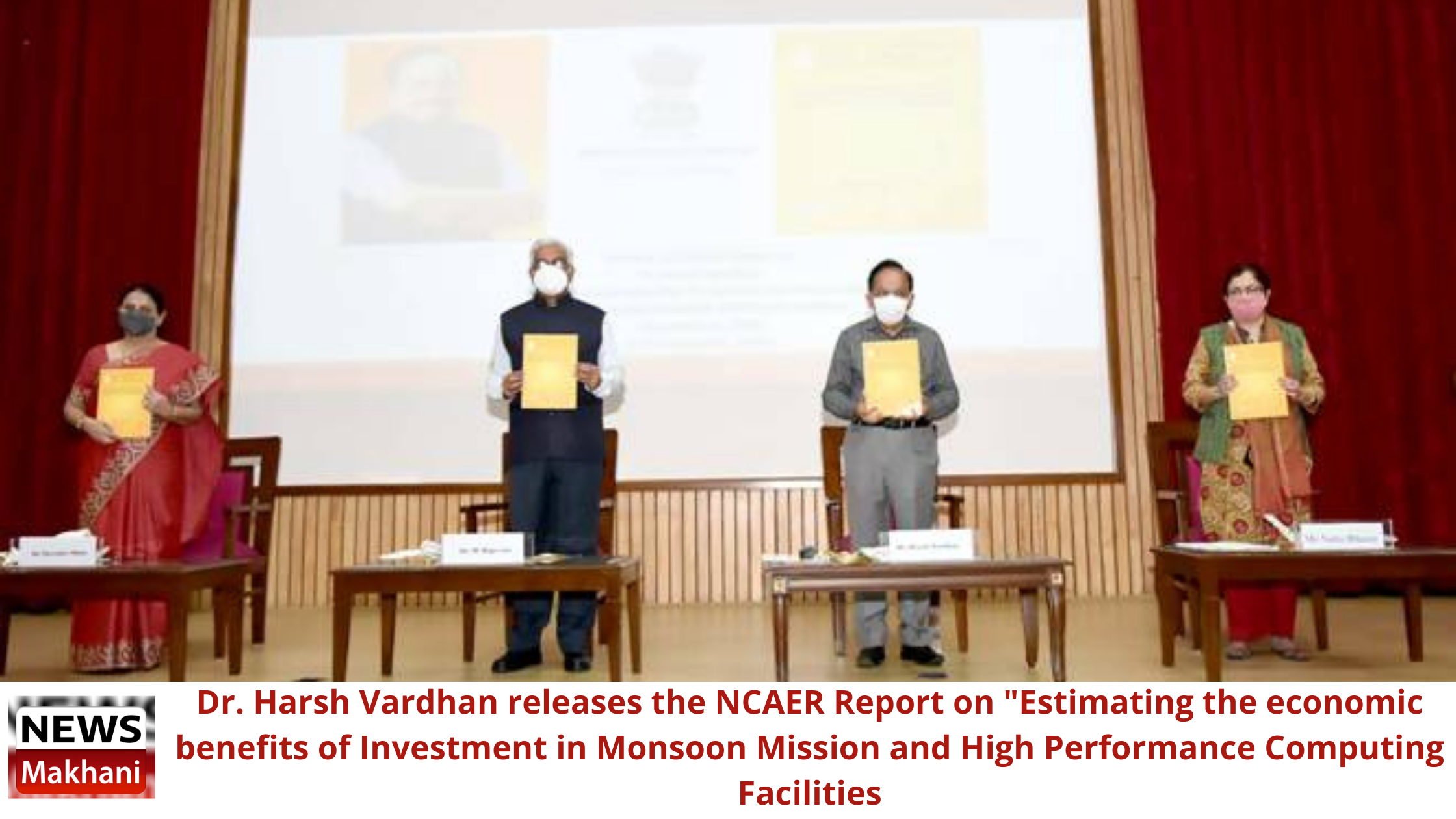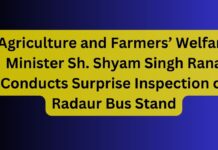Dr. Harsh Vardhan releases the NCAER Report on “Estimating the economic benefits of Investment in Monsoon Mission and High Performance Computing Facilities
New Delhi, November 3
Union Minister of Science and Technology, Health and Family Welfare and Earth Sciences, Dr. Harsh Vardhan today released the National Council of Applied Economic Research (NCAER) Report on “Estimating the economic benefits of Investment in Monsoon Mission and High Performance Computing (HPC) Facilities” at a function at Prithvi Bhavan in New Delhi.
Speaking on the occasion, the Minister said that the report has highlighted, “For every rupee spent by the government on the National Monsoon Mission and High-performance Computing programs of the Ministry of Earth Sciences(MoES), the country would gain economic benefits worth fifty rupees, which is 50 times more benefit on the investment over the next five years period”. NCAER is an independent, not for profit, economic policy research think tank based in New Delhi. The report is based on a study commissioned by M/o Earth Sciences, GoI.
Dr Harsh Vardhan said that “One of the most prominent weather services of IMD is the agro-meteorological services for farmers for their day to day operations. IMD in collaboration with Indian Council for Agricultural Research (ICAR) provides agro-meteorological advisories twice a week through around 400 district agro-met units for farmers in all districts”. “Recently, IMD started block level weather forecasts and warnings for farmers. At present farmers in 2000 blocks, are receiving advisories. As on today, these forecasts and warnings are disseminated to around 4.3 Crore farmers through various communication channels including Mobile App, Meghdoot and social media”, he added.
Stating that “Indian National Centre for Ocean Information Services (INCOIS) provides ocean state forecasts and warnings to fishermen going out to sea for fishing on daily basis”, Dr. Harsh Vardhan pointed out, “These forecasts and warnings are also disseminated to fishermen through all communication channels. At present around 7 lakh fishermen receive ocean state forecasts and warnings”.
The Minister said that Government of India has launched the Monsoon Mission in 2012 with an objective to improve weather and climate forecasts over the country in all time scales, and highlighted that through the monsoon mission, MoES could establish the state of the art dynamical models for weather and climate forecasts. He also said “To augment the computing resources, MoES also augmented the HPC facility at Indian Institute of Tropical Meteorology (IITM), Pune and National Centre for Medium Range Weather Forecasting (NCMRWF). The earlier capability of about 1.2 petaflops was upgraded to around 10.0 petaflop HPC facility. The present facility is the best HPC facility in the country and the fourth best among the weather prediction centres around the world, after US, UK and Japan”.
Secretary, M/o Earth Sciences, Dr. M. Rajeevan, in his address said that MoES has also developed capabilities for measuring and forecasting air-pollution in Delhi as well as various application tools in diverse sectors including in Agriculture and Energy. He highlighted that the accurate and timely forecasts by the MoES/IMD on natural disasters like cyclones, flooding etc, have benefitted disaster management in minimizing their impact, thereby saving lives and property. He said that the Ministry is in the process of developing capabilities of assessing and forecasting in sectors like Energy & Power, Water resources and Health. The Ministry is also expanding its flood warning system to benefit more cities/states in the country, he added.
Dr. M. Mohapatra, DG, IMD; Dr. Parvinder Maini, Project Director and Scientist ‘G’ and several senior officials of MoES and IMD were present on the occasion while all institutions under MoES joined via the virtual platform.

 हिंदी
हिंदी






